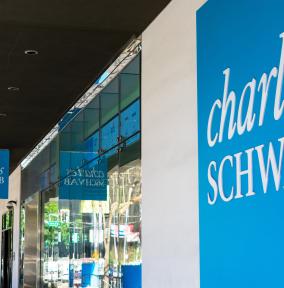Secured by Bunnings — Strongest Australian brand
Inside the Enhanced Yield Fund
By David Murray, PM Capital
The PM Capital Enhanced Yield Fund looks for anomalies: mispriced investments with the potential for outsized returns. We believe the best anomalies are market-leading companies with simple business models. Detailed credit work then determines the investment opportunity.
The Fund’s investment in Bunnings is a great example of this process in action. Initiated in 2013 and with meaningful opportunistic buying over time, it makes up 3% of the Fund and is one of the largest individual positions. The bond matures in 2025 and currently pays a floating-rate yield of ~6.2% per annum, about 1.85% above the RBA cash rate – a big margin for such a high-quality business1.
Strong business, leading position
Bunnings is the leading home hardware chain in Australia, with remarkable brand recognition (recently awarded strongest brand in Australia for the third consecutive year2 ) and customer loyalty that few businesses can match. It also holds a valuable portfolio of stores in prime locations.
Bunnings is owned by Wesfarmers, an Australian conglomerate with diversified earnings including Kmart and Officeworks. Wesfarmers has a strong, stable balance sheet that provides an extra layer of protection to investment in the subsidiary.
Investment details
The Fund’s investment is secured by 15 Bunnings properties, each holding long-term rental agreements with Bunnings and 100% guaranteed by Wesfarmers. All expenses related to operating the stores go to Bunnings, with the property owner simply receiving pre-agreed rental payments. Secured bondholders have first claim on the properties should rental payments stop.
There are a few other stand-out features worth highlighting:
- The bond was issued in 2013. Since then property prices have skyrocketed, increasing the value of the underlying assets.
- Bunnings is contractually required to pay back the bond throughout its life. As of November 2023, 29% of the bond principal has already been paid back, reducing the risk of future non-payment.
- Bunnings issued a separate bond that ranks below the bond we own, providing further balance sheet support to the investment.
Anomaly opportunity
The Bunnings 2025 bond is exactly the kind of investment we look for: market-leading business; debt secured by rented and guaranteed properties; a strong backer in Wesfarmers; meaningful protection against any loss; and an attractive risk-adjusted yield.
The Enhanced Yield Fund is constantly looking for new anomalies and right now holds a broad range of investments at the early, middle, and late stages of their investment theses. We believe each one offers outsized return potential for its risk.
About the author
David Murray is a Senior Credit Analyst at PM Capital, a leading asset manager of global and Australian equities and fixed income. More PM Capital Insights are available here.
Notes
1As at 12 February 2024
2 Brand Finance ‘Australia 100 2024’ report: https://brandirectory.com/rankings/australia/
This insight is issued by PM Capital Limited ABN 69 083 644 731 AFSL 230222 as responsible entity for the PM Capital Enhanced Yield Fund (ARSN 099 581 558, the ‘Fund’). It contains summary information only to provide an insight into how we make our investment decisions. This information does not constitute advice or a recommendation, and is subject to change without notice. It does not take into account the objectives, financial situation or needs of any investor which should be considered before investing. Investors should consider the Target Market Determinations and the current Product Disclosure Statement (which are available from us), and obtain their own financial advice, prior to making an investment. The PDS explains how the Fund’s Net Asset Value is calculated. Past performance is not a reliable guide to future performance and the capital and income of any investment may go down as well as up. The Yield to Maturity is before fees. The yield to maturity is not a forecast of expected Fund performance (including distributions) and it provides a simple snapshot (at the time of this report) of the estimated before fees yield return of the portfolio holdings should they be held to maturity, and assumes that the bond issuers meet all their coupon and maturity obligations.




